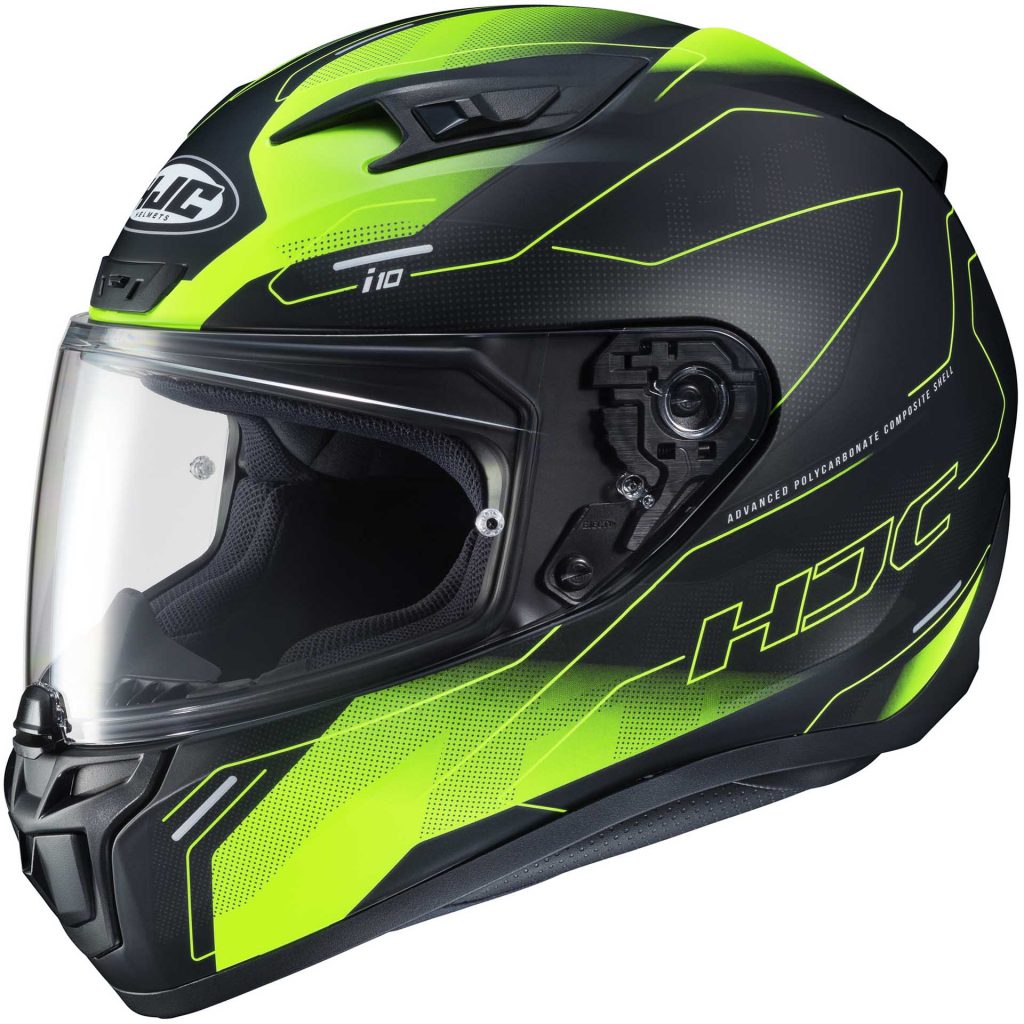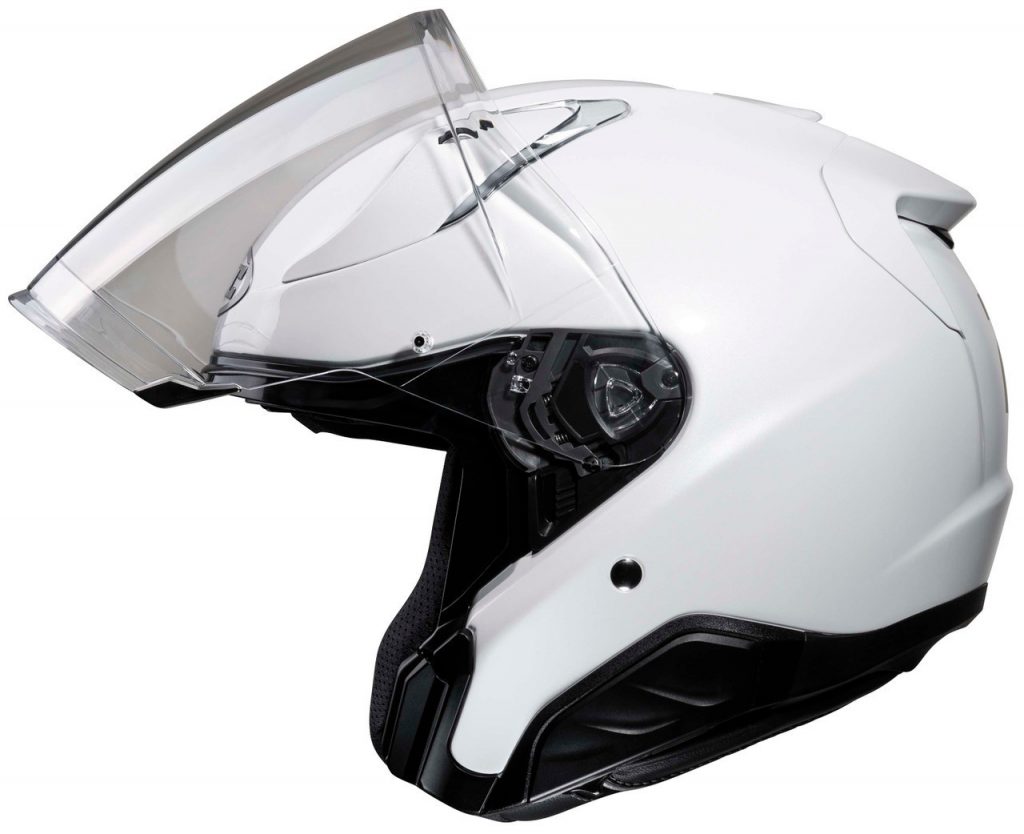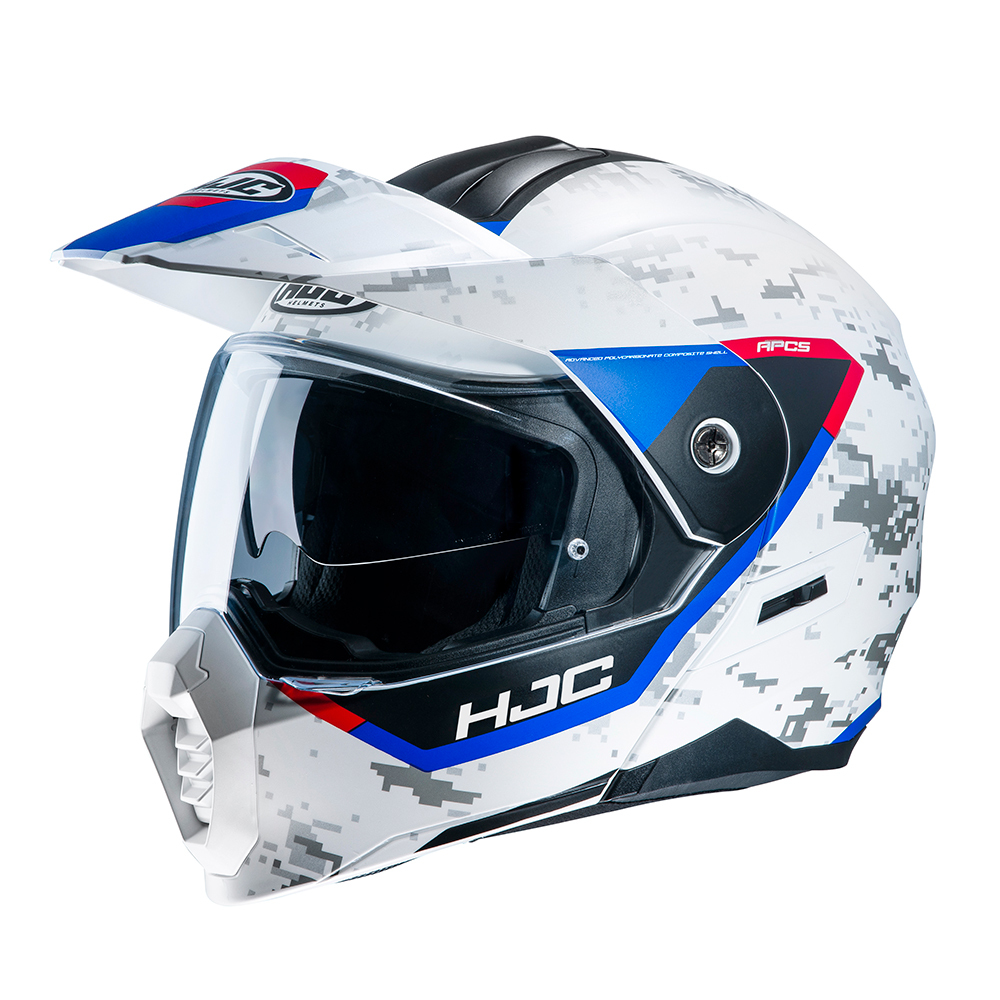In this guide, you will learn about the importance and effectiveness of types of motorcycle helmets.
This guide is only focussing on road helmets.
Full Face helmets.

The full-face helmet covers the rider’s entire face and head, providing the extensive coverage for the head and neck. Consequently, it is regarded as the safest type of helmet to protect against severe injuries. It shields the chin and jaw from potential impacts in the event of an accident. It is an ideal helmet for-wheelers as it provides sufficient protection rain, wind and external noise. Whether for a long or a commute, these helmets offer optimal head protection.
Budget – Agrius Storm £79.99 Tried & Tested, read our review of the Agrius Storm
Mid-range – HJC NC £148.21
Premium – Bell DLX £672.99
Open-face helmet.

As the name suggests, it covers only the head, forehead and ears. These helmets are lightweight, making them comfortable, especially for short commutes. It may not be the safest helmet since it does not cover the rider’s chin and jaw, exposing them to adverse injuries. But it is a popular choice among city dwellers as it offers comfort in choc-o-bloc traffic and hot weather conditions; a favourite among lower-speed scooters and bike riders. However, as mentioned, it may not provide optimum protection to the rider since it only covers the head.
Budget – Zorax ZOR-604 £34.98
Mid-range – LS2 infinity II £199.99
Premium – Bell custom 500 £463.50
Modular helmets.

Modular helmets provide advantages of both full-face and open helmets. Also referred to as flip-up helmets, they a chin guard and visor that can be up to offer the sensation of an open-face helmet. They are to the same as full-face helmets. They slightly heavier due to the hinge facilitates the operation the chin guard. Typically, cost significantly more than open helmets but can be more affordable than some premium full-face helmets.
Budget – Mida MV-2 £79.99
Mid-range – HJC i91 £129.99 Tried & Tested, read our review of the HJC i91
Premium – Sena impulse £376.93
Adventure helmets.

Adventure helmets provide advantages of both full-face and open helmets. They offer a chin guard that is loosely based on a motocross helmet, however have the advantage of a visor. They slightly slightly lighter in nature to be more comfortable being worn daily for long periods of time.
Budget – Mida MV-3 £69.99 review coming soon
Mid-range – Bell MX9 £277.16
Premium – Aria Tour X4 £655.17
Tips to keep in mind while choosing the right type of helmet
Here are some factors you should consider while selecting a helmet.
- Safety certification: Ensure you choose a helmet that is certified.
- Right size and shape: Choose a helmet that fits your head snuggly. Don’t buy a larger size; choose one that fits well. At first, it may appear to be tight, and you may mistake it for being smaller, but it will eventually take the shape of your head and fit perfectly.
- Inner liner and cushioning: Ensure you choose a helmet that features removable and washable inner pads. This will ensure your helmet is always clean and odour free.
- Visors: Ensure you purchase clear visor instead of a or mercury-tinted one, your vision can be impaired during nights and rainy conditions. Additionally, select a visor that is scratch-resistant.
- Anti-fog: This for me is a must for any helmet, get one with a pinlock, until I had one I wondered what all the fuss was about, now I will not go back. All the full face, modular and adventure helmets in here will accept a pinlock.

Article written by Nige.
Last update: January 2025
Nige commutes to work on one of his ‘trusty’ bikes throughout the year, no matter the weather.
We may receive a commission if you purchase a product using the affiliate links on any page of this website. This is at no cost to the purchaser, however does support our website and helps us to continue to build with more great content.
